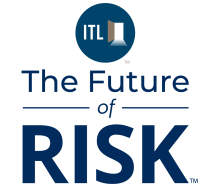The National Health Care Anti-Fraud Association (NHCAA) and the Coalition Against Insurance Fraud (CAIF) have repeatedly named provider fraud the most acute pain for the health insurance industry. The sector's annual losses from dishonest medical providers are alarming: NHCAA's estimate is $54 billion, CAIF places it as high as $105 billion, and some government agencies suggest it could be more than $300 billion.
The enormous costs of provider fraud result from its multiple devastating impacts. From the financial standpoint, illegitimate and inflated payouts break the health payer's claim reserves and lead to skewed cost forecasts, with growing reserves commonly leading to a rise in premiums and the loss of competitive positions. Operationally, fraud distorts the picture of care usage, making it harder for payers to fairly assess health risks and manage chronic conditions — but you know all that already.
Notably, when I discussed provider fraud concerns with my clients in health insurance, many cited the loss of trust between the payer and providers as the worst outcome. Having once faced a previously unknown scheme from a certain provider, the payer has to institute stricter controls across the entire network. Every new incident escalates administrative and IT costs (again, leading to higher premiums) and slows claim processing due to extra oversight. As fraud schemes evolve constantly, the payer's investments in protective measures are growing exponentially.
What's So Challenging About Detecting Health Provider Fraud
So far, most of the health payers' conventional methods of combating provider fraud have been fairly ineffective. The cost of fraud, when adjusted for inflation, has nearly doubled over the last 30 years. And with the fraud rates in insurance showing the greatest rise among all industries, it's clear that fraud safeguards that have worked for other domains failed to aid health payers specifically.
Why so?
The primary challenge is constantly evolving fraud schemes. This is by far the biggest concern among my clients, and I came across the same sentiment in multiple studies: For example, FRISS, in its 2022 Insurance Fraud Report, names keeping up with new trends in insurance fraud as the payers' top hindrance. Indeed, even if a robust solution to some scheme comes quickly, it loses its edge as soon as new tricks appear. As providers are becoming increasingly creative, payers are forced to respond with better, more versatile fraud detection tools.
Plus, we have the inherent complexity and specificity of medical data, which holds back the development of effective health fraud detection algorithms. Interpreting and verifying health claim evidence like medical images and lab test results has traditionally required deep professional expertise. But even for investigators with strong medical background, it's too easy to overlook visual and technical inconsistencies in highly specific imagery, especially when inspecting large-volume, multi-format submissions. These are the ideal conditions for misrepresenting diagnoses and falsifying medical necessity.
The decentralized nature of insurance-relevant data further complicates the story. With open APIs and automated reconciliations, it became easier for payers to cross-reference claims with federal databases and collaboratively detect schemes like double billing. However, no traditional analytics tools can recognize intricate, multi-tier schemes like referral collusions and kickbacks.
AI to Put an End to Provider Fraud — Or Will It?
Rule-based fraud detection tools have been here for decades to help health payers spot known types of provider fraud, like billing for the ineligible and unbundling. But rule-based tools can't address syndicated provider offenses and tech-supported schemes like medical image tampering, so by design, they are unfeasible for sufficient protection.
Advanced tools powered by artificial intelligence (AI) brought health insurers something old-school stuff could never offer. With AI's ability to continuously match millions of diverse medical data points, recognize hidden patterns, and instantly flag suspicious outliers, payers can now address many of the previously untamable types of fraud, including media forgery and organized collusions. Intelligent algorithms can study complex healthcare concepts, reason on the necessity and relevance of medical procedures, and spot inconsistencies in claims as humans do. More importantly, AI engines can continually learn from fraud patterns and get smarter over time, meaning payers can expect a steady growth in fraud detection accuracy.
But does this mean AI solutions keep up with the evolving pace of health insurance fraud?
Alas, they can't.
Just like traditional tools, intelligent systems can't foresee emerging types of fraud. Take a recent, frustrating example. Advanced claim analytics powered by machine learning (ML) have been in use for roughly a decade and have proven to be effective in detecting sophisticated fraud schemes. However, the algorithms behind these tools weren't designed to capture brand-new frauds like believable medical image fakes and convincing abusive narrations enabled by generative AI (GenAI). So, with GenAI at their fingertips, providers are once again miles ahead of payers in 2025.
AI Tool Stack for Efficient Provider Fraud Detection in 2025
At this point, my health insurance clients usually ask:
"OK, we can't respond to what's behind the horizon. But what technology do we need to address what's already here?"
Below, I share a minimal tool stack that will help health payers establish viable protection against healthcare provider fraud in 2025. Predictably, we have to fight fire with fire — you'll need AI to recognize AI fakes, but it is also effective for battling old-school fraud schemes.
Based on my estimates, implementing this multimodal toolset can bring health payers up to a 3x increase in provider fraud detection rates and a 20% to 90% reduction in fraud-associated losses. McKinsey analysts suggest that large health insurers can expect $380–$970 million savings in total claim payouts for every $10 billion of revenue with the current AI capacity.
ML-powered behavioral analytics to detect fraudulent provider actions
Machine learning models can identify anomalies in billing patterns, deviations in medical service frequencies, and non-obvious patient visit overlaps. This works great for exposing the most frequent types of provider fraud, such as upcoding, unbundling, phantom billing, and repeated charges for unnecessary or non-performed services. The purpose of behavioral intelligence tools is simple: understand how legitimate providers act and flag those who don't play by the rules.
Behind the scenes, ML algorithms study historical claim data, provider actions, and "normal" behavioral patterns across specific geographies and clinical specializations. Over time, they self-construct individual behavioral baselines that are unique for each provider. Once the baselines are set, the models can accurately recognize and classify any outstanding events. Early adopters of ML-powered behavioral analytics systems report a 60%+ increase in fraud detection rates with a twofold decline in false positives.
To automate the behavior diagnostic cycle end to end, such solutions need a broad stack of smart components. My colleagues from the data science team at ScienceSoft suggest unsupervised and supervised ML models for clustering and detecting natural groupings, outlier detection models for surfacing deviations, diffusion models for capturing time-based changes in provider conduct, and smart notification engines for issue reporting to fraud investigators. Investigator dashboards should provide a real-time overview of the raised flags with traceability to source provider data.
I know this may sound like a multimillion-dollar investment, but based on my experience, building anomaly detection solutions is one of the most affordable insurance AI initiatives. At ScienceSoft, we have managed to deliver the entire stacks of tailored models within the budget of $100,000–$250,000. Off-the-shelf behavioral intelligence tools like Provider Prepay FWA Detection by Shift Technology can be quicker and cheaper to implement, but they come with accuracy and integration tradeoffs.
Intelligent image analysis tools to recognize forged claim evidence
Medical image intelligence tools will help you catch edited, reused, staged, and entirely fabricated visual evidence. These tools are valuable for their ability to reveal technical forgery that even human claim reviewers with deep medical expertise might overlook.
Such tools serve a range of specific purposes. First, smart algorithms (at ScienceSoft, we use convolutional neural networks or transformer-based neural networks) inspect image metadata like device signatures, editing trails, and timestamps to verify image authenticity and expose suspicious manipulations. Next, they compare submitted images against the payer’s claim archives to find duplicates used in other cases. Finally, they analyze visual noise patterns, compression artifacts, and pixel anomalies that signal tampering. When an image contains any inconsistencies (e.g., a supposedly “new” MRI scan has the same shadows as one from last year’s claim or an X-ray has mismatched anatomy or signs of cut-and-paste), the solution flags it for manual inspection.
In ScienceSoft’s recent dental image analysis software project for medical insurance, we went a step further and combined CNNs with machine learning algorithms for autonomous claim validation. This way, the system could cross-reference image parameters and embedded text with provider filings and decide on claim eligibility outright. Remember that you may also need dedicated background algorithms to unify image file formats and establish standardized image processing flows.
When it comes to the accuracy of such engines, it largely depends on how rich and representative your model training dataset is and how deeply the model is tailored to your review workflows. Well-developed models can show up to 95% accuracy in detecting image falsifications – a rate that's not attainable with any commercial models.
LLM-supported document review to spot abusive provider narratives
Health payers know firsthand how tricky are providers' words — long, tangled justifications buried in a sea of medical jargon. One way to uncover abuse in complex provider narratives at scale is to apply a medical document review tool powered by large language models (LLMs). In simple terms, LLMs are a sub-type of GenAI that power tools like ChatGPT — the AI algorithms that can process natural language requests and form human-sounding responses.
In our case, LLM models can quickly parse massive volumes of provider notes, medical records, appeal letters, and other textual data and detect inconsistencies and subtle lingual tricks that may indicate fraud. For instance, they can pick up vague and medically incoherent documentation, contradictions in treatment timelines, and mismatches between diagnoses and procedures. Such tools can also highlight clinical term misuse, which could be used to justify higher-cost billing codes.
The best thing about LLMs is arguably their ability to explain their output in regular human language. For example, a health claim reviewer can ask an LLM to summarize high-volume documentation for complex surgery and explain suspicious abstracts in simple words. Early adopters of LLM-supported tools for detecting fraudulent claims report dramatc gains: 90% quicker claim reviews, up to a 400% increase in reviewer capacity, and a 5–20% reduction in illegitimate payouts.
You don't need to build your own LLMs from scratch. Applying retrieval augmented generation (RAG) and prompt engineering to commercial LLMs is usually enough to obtain an accurate solution tailored to the payer's business-specific data. For provider fraud detection specifically, I recommend opting for a healthcare-specific LLM like Med-PaLM or BioBERT. Such models are trained on specialized medical corpora and care delivery examples, meaning you can roll them out without costly "upskilling." Implementation costs may vary from $150,000 to $500,000+, depending on the chosen approach to LLM enhancement.
Network intelligence solutions to reveal provider collusions
Intelligent network analytics help uncover a less frequent but highly damaging type of medical fraud — organized healthcare provider collusions. AI engines can automatically map relationships between providers, spot factors like shared addresses, financial ties, coordinated referrals, and circular service flows, and identify groups of bad actors working together.
To find suspicious care provider hubs across multi-layer networks, such systems use network science models, including graphs and community detection algorithms. Like with medical image analysis tools, you can incorporate prescriptive machine learning into these solutions to automate decision-making. For instance, ML algorithms could auto-classify the revealed network patterns as legitimate, borderline, or clearly fraudulent and trigger relevant follow-ups.
The success of network intelligence systems has always depended mainly on the breadth of provider data they access. Ideally, such software should be able to monitor dynamic changes in provider profile info, patient encounter logs, referral trails, claims data, and external feeds (think provider registry info and corporate activity details from public databases). A smart move is to prioritize integrating the solution with diverse internal and third-party systems. Some health insurance providers ultimately choose custom software engineering due to limited integrations in ready-made products, which results in lower efficiency.
Also, network intelligence systems rely on visual representation way more than other tools in the stack. Such solutions should have interactive charts reflecting multi-tier network connections, scatterplots depicting concentrated provider links, and temporal graphs showing how provider relationships evolve over time. Investigators should also be able to drill down to granular details.
Maximizing AI Accuracy and Compliance While Reducing the Costs
Among the latest insurance AI stats, the following numbers seem the most representative to me: While 84% of health insurers currently use AI/ML in some form, only 14% trust machines in the actual decision-making, and of those who do, 97% encounter challenges related to AI accuracy. The infamous case of UnitedHealth, which was legally pursued for using low-precision AI models to deny care, undermined member trust in the entire sector, pushed regulators to institute stricter oversight, and taught payers to prioritize algorithm accuracy. Many of the health insurers I've talked to cited concerns about AI model precision — and sufficient proofs of that precision — as their biggest barriers to adopting intelligent fraud detection tools.
That being said, from the technical angle, both concerns are far-fetched. The solutions for maximizing AI accuracy and transparency are here; they just require extra investments, which not every health payer wants to and can afford to bear. Unfortunately, as I always tell my clients, any attempts to go without these will inevitably cost you the efficiency of the entire AI system.
There are still ways to optimize expenses, though. Here are some proven tactics:
- As I mentioned, the volume and versatility of data used for AI model training are the key drivers for fraud detection accuracy. Still, in some cases, the available data is just too scarce for meaningful representation. Let's say you only have a few examples of claims for rare back surgeries. One way to give your algorithms more patterns to learn from is to train a generative AI model on real claims and apply it to synthesize realistic data for similar scenarios. For example, GenAI can produce claim files with the same procedure code but different treatment programs and billing scenarios. GenAI-supported data synthesis comes 30% cheaper than acquiring, standardizing, and labeling real data.
- Synthetic data augmentation can also be a budget-friendly method of source data debiasing. Synthetic data for underrepresented member groups, providers, and fraud types should reflect hypothetically accurate care paths and charges. This way, intelligent algorithms don't replicate historical bias and can learn to better distinguish legitimate differences from fraud. For you, this means sharper detection of provider fraud and minimized risks of unintended discrimination.
- In my recent paper on AI for health insurance underwriting, I elaborated on cost-effective ways to achieve AI transparency sufficient for regulatory compliance. The key point is that big tech players are aware of regulatory scrutiny, so major AI platforms like Azure Machine Learning and Amazon SageMaker come with built-in explainability toolkits. By using their go-to AI development frameworks, you avoid costly model engineering from scratch and get the fully interpretable fraud detection logic from the onset.
Contributors: Stacy Dubovik, financial technology researcher, ScienceSoft; Alex Savanovich, senior data scientist, ScienceSoft







